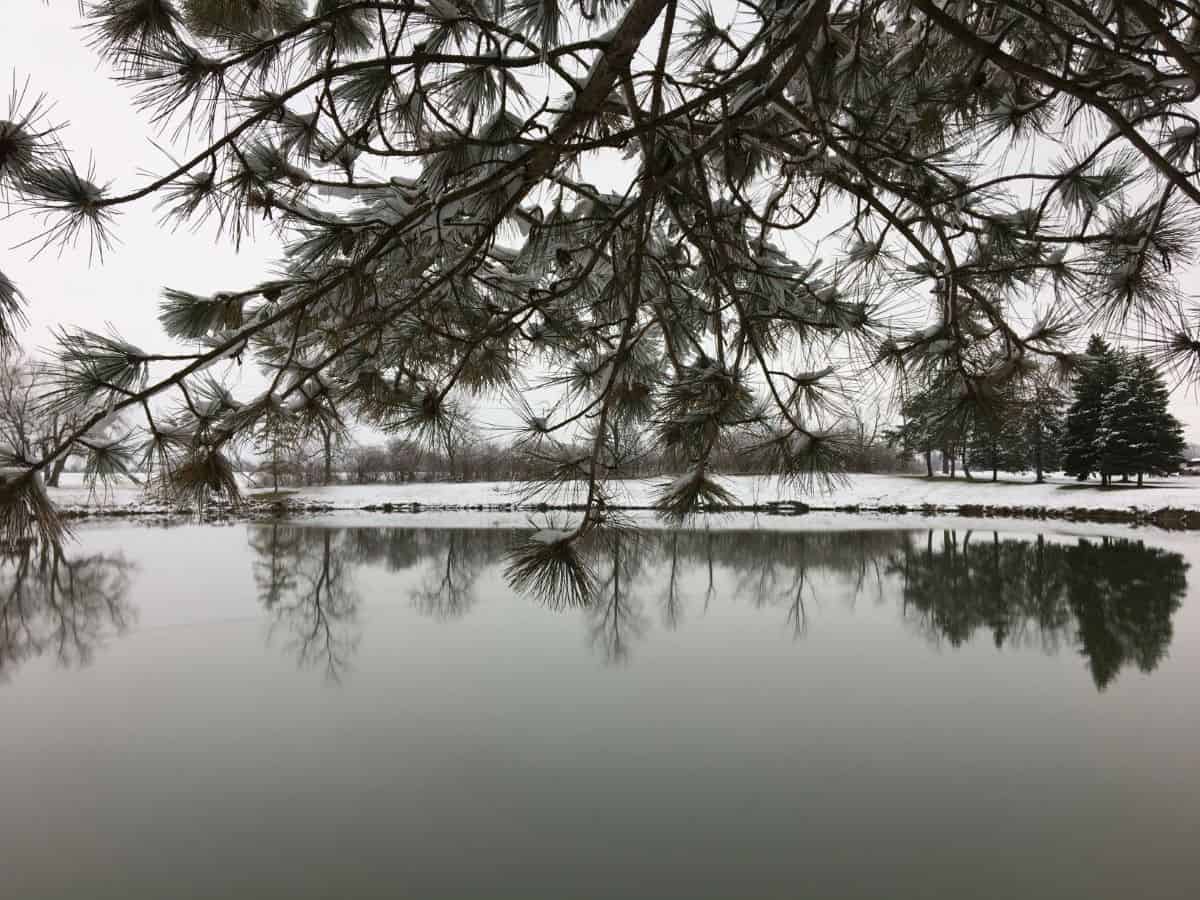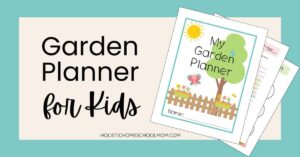Nature study in winter can be a little challenging, for obvious reasons. It’s cold and snowy. It’s easier to stay inside beside a cozy, warm fireplace in your pajamas. However, this season does offer unique opportunities for winter nature study.
I am also happy to tell you that winter nature study doesn’t have to involve ONLY going outside. You can observe nature from indoors, and your children will STILL be learning.
Ideas for Homeschool Winter Nature Study
1-Head To the Backyard With a Nature Notebook
If you’re not already utilizing a nature notebook in your homeschool, I highly recommend it. Use any journal with sturdy pages that can withstand crayons, markers or even watercolors.
Once a week I assign the kids to find something in nature to sketch in their notebooks. We then try to note what they sketched, where they found it, and date it.
It’s fun to look back over various sketches from the course of a year, but also the course of numerous years. The kids have a visible record of their ever-improving art skills, and the journals become something of a keepsake.
A simple way to start with a nature notebook is sketching and noting the changes of trees in the yard each month. We’ve been tracking the changes in our maple and apple trees since the start of school.
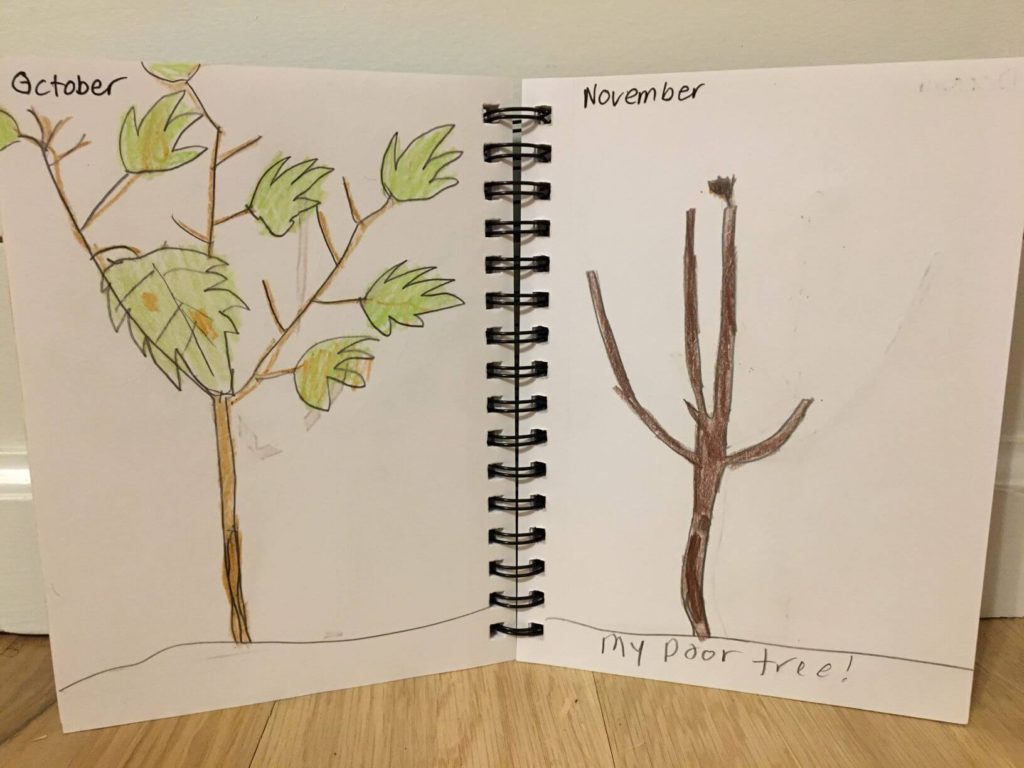
We don’t always stick to the yard, however. Sometimes we roam around the neighborhood, or head to a local park with hiking trails and natural woodland areas.
This requires a bit more planning, but is an excellent change of pace for monotonous winter days.
This is especially important if your yard is small or lacking in much nature. We rented for a couple years and besides grass and weeds, the yard was so barren and boring!
The kids could only dig up so much dirt looking for insects before we decided we needed to find somewhere new to explore.
Before we go any further, it’s true confession time about going outside in winter: The kids can sometimes mumble and groan.
Are you surprised?
I know you’re not shocked. It can be a chore finagling boots, coats, gloves, hats, scarves, etc., right? Which can tempt me to also mumble and groan.
However, I will tell you that almost always, when we decide to venture out despite opposing feelings, we enjoy the adventure and a little fresh air. It’s worth it so just do it.
With proper preparation of appropriate clothing, snacks (and might I suggest picking a sunny day?), you’ll be glad you did.

2-Utilize Books and Videos for Nature Study
After you’ve observed a particular plant or animal in nature, follow-up with related books, DVDs, YouTube videos, etc. Alternatively, if heading out in winter just isn’t your jam, or your housebound for other reasons, pick an animal and start investigating its winter habits.
I love using our local library and select most of my resources from there. You might also consider joining PBS Passport. For a minimum monthly donation you can access tons of shows. NATURE is a favorite, and would be a great starting point with so many episodes available about animals.
Young children can start with learning how various animals survive during winter. Here are three excellent book titles to get you started.
- Animals in Winter by Henrieta Bancroft
- The Big Snow by Berta & Elmer Hader (Caldecott Medal Winner)
- Owl Moon by Jane Yolen (Caldecott Medal Winner)
Older students can research a specific animal more in-depth, turning their knowledge into a creative project like a stop motion movie (this app is fairly simple and free), a presentation for the family, or just a simple “newsletter” about their findings.
Moms: let me affirm that learning nature study simply from books and videos is totally acceptable during winter. Especially if your winter weather is like mine in the midwest: cold, snowy, wet, muddy, and gray.
Yes, the ideal is observing firsthand, and we all know its valuable and important. However, don’t downplay the learning that happens just from an informative nature video, or a selection of beautiful picture books.
There you go.
Permission to stay inside if you need it.
You’re welcome.
3-Visit a Nature Center Or Park
Tired of your own backyard? Maybe you don’t have a backyard? Head to a local park, especially ones with great hiking trails or woodland/wetland areas.
Often times, nature centers have wonderful employees or volunteers with a wealth of information they’re more than happy to share.
They may have examples of animal scat, fur, bones, etc. on display that are local to your area. In Ohio, we’re blessed to have a network of parks with excellent programming for kids and homeschoolers.
Be sure to download this FREE Winter Scavenger Hunt printable.
Take it on your next trip to the park!

4-Create a Backyard Bird Restaurant

The kids are bound to be excited if you call it a bird restaurant! Invest in a few bird feeders of various types. Perhaps one of these amazing window feeders?
There are also cheap options for DIY feeders, like these made from milk jugs.
My kiddos went on a whim last year and scavenged the recycling for empty gallon jugs. They had a blast crafting their own feeder designs, waiting to see who’s feeder attracted the most visitors.
One morning we had nine mourning doves eating fallen seed on the ground, and over 13 finches on one little finch feeder. It was kind of amazing. The kids even started giving the birds names.
I also love the ideas in this article at Farmers’ Almanac to make a wildlife tree of treats.
It shouldn’t take long before you have plenty of visitors to sketch into those nature notebooks. Keep some bird identification guides handy!
5-Start a Nature Tray
All those little rocks, acorns, pinecones, sticks, and feathers the kids load your into your pockets during these nature outings are perfect for a nature tray.
Hunting for new items to add to the tray can also bring extra excitement and challenge into your nature journeys.
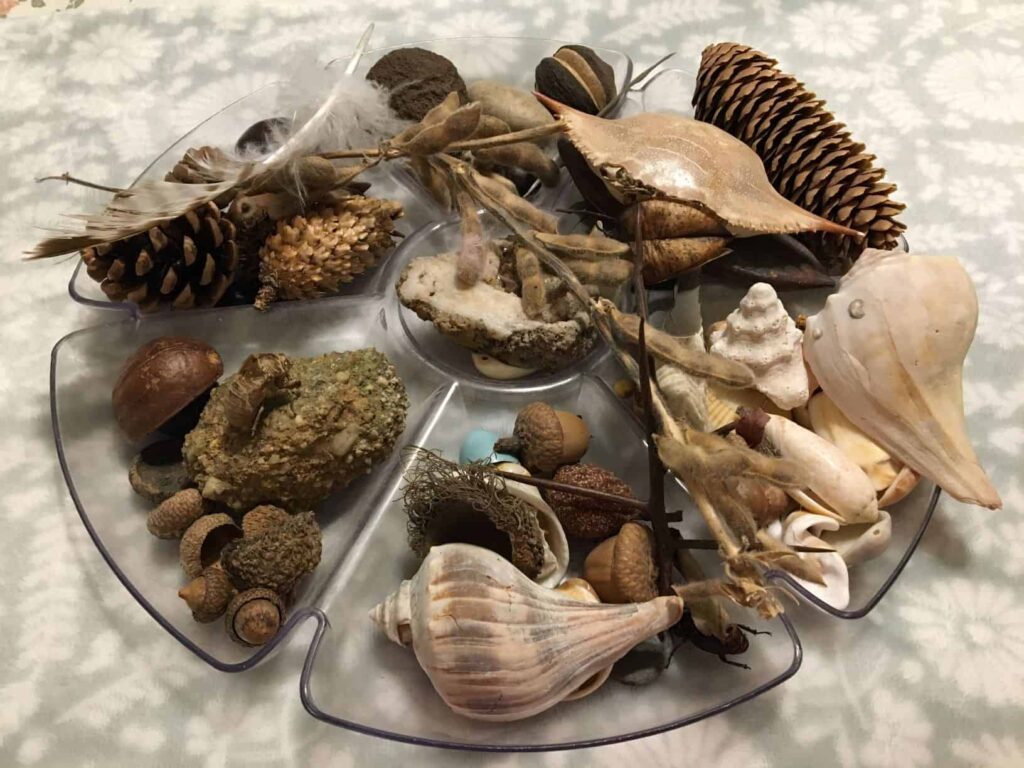
I used a simple plastic vegetable tray from the thrift store.
We collect all year long and throw everything together, but you could easily create trays categorized by seasons. These treasures from nature make lovely decor, and extra items can be turned into crafts or used for art projects.
I hope these 5 Simple Winter Nature Study Ideas bring life and joy into these dreary months, and allow nature study to happen in your homeschool all year long.
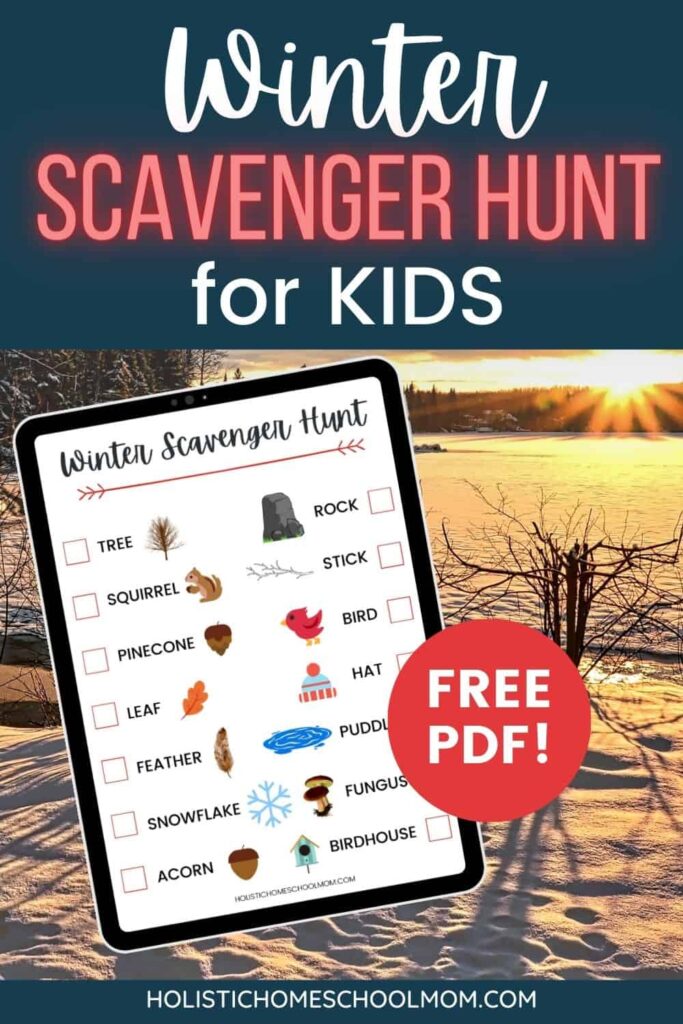
Keep the focus on enjoying what you are doing, and don’t forget the hot chocolate and the FREE Winter Scavenger Hunt printable!
Conclusion
As you can see, it IS possible to keep up with your nature studies, despite the cold and inclement weather of winter. I hope you will take advantage of the beauty that nature provides, even in winter. Winter nature study really can provide doses of joy for your homeschool that can be difficult to find when the weather if frightful.
How about you? Do you include nature study in your homeschool? Drop a comment below!

